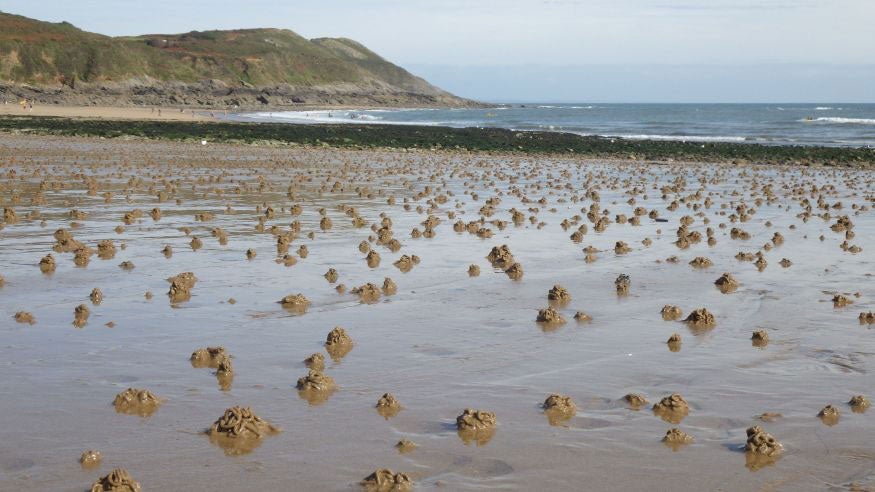Spermwatch: Scientists need YOU to look for lugworm sperm
People of Britain told to keep an eye out for sperm puddles

The people of Britain are being asked to look out the sperm of the lugworm, in a nationwide campaign to find out more about the sex lives of the secretive, burrowing marine worm.
Spermwatch is a citizen science campaign launched by scientists determined to solve a mystery that has eluded them for decades: exactly what environmental conditions trigger the lugworm to start spawning?
As the campaign’s website explains: “We need people across the UK to look for sperm puddles and tell us when they appear.
“Our aim is to find out the exact time when male lugworms release their sperm, and how that varies around the UK.”
Lugworms, better known among humans as a source of fishermen’s bait than for their mysterious sperm, dig into sandy beaches and spend their lives inside their burrows. Most people are more familiar with their casts - piles of swirly tubes of digested sand excreted by the worm – than with the lugworm itself.
But, the Spermwatch campaign organisers explain, lugworms are “a valuable part of the marine ecosystem. They are a main food source for wader birds and fish, circulate nutrients in the sand, and are used as bait by fishermen”.
In order to breed, the male lugworm releases sperm which collects in puddles on the surface of the sand.
When the tide comes in, the sperm is washed down into the burrows of the females and fertilises their eggs.
“Lugworms are fascinating,” said Spermwatch organiser Dr Katrin Bohn, of the Institute of Marine Sciences at the University of Portsmouth. “The entire population at a specific location reproduces for just a few days every year, and only when certain environmental conditions are ideal.
"We want to know what those conditions are, and also understand how climate change, for example, will affect that. By going out for a walk on any beach across the UK, members of the public can help us in answering those questions."
Dr Gordon Watson, principal lecturer at the Institute of Marine Sciences, added: "This is a great way for people to get involved in scientific research. It would be virtually impossible to collect these data without public involvement, so every bit of data the public collects is vital."
The Spermwatch survey instruction pack, available via the website, shows that would-be sperm spotters need little more than a pencil, a clipboard, tide tables and a recording sheet. Plus a stopwatch, and depending on inclination and British seaside weather, a camera and warm clothing.
The public are advised that lugworm sperm puddles look like white or milky specks on the sand.
Spermwatchers need to see how many lugworm casts and sperm puddles they can find in ten minutes, or the time it takes to find 100 casts or puddles, whichever is shorter.
To avoid confusing sperm puddles with seagull poo, the scientists advise: “Bird poo marks could be mistaken for sperm puddles, so look closely. If there are only one or two in your search area, it is probably bird poo. Sperm puddles will appear in higher numbers. Take photos if you are not sure.”
“This study,” lugworm spermwatchers are told, “Will provide unique data into what environmental conditions trigger them to start spawning, something scientists have struggled to find out.”
Spermwatch is part of a wider conservation project called Capturing our Coast, a Heritage Lottery Fund partnership between the universities of Portsmouth, Newcastle, Bangor and Hull, the Marine Conservation Society, the Earthwatch Institute, the Marine Biological Association and the Scottish Association of Marine Science.
The first spermwatches will start on September 30, and throughout the autumn members of the public can join a series of group spermwatch outings that are being organised all over the coast.
Instruction booklets can be downloaded at: http://www.capturingourcoast.co.uk/spermwatch.
Join our commenting forum
Join thought-provoking conversations, follow other Independent readers and see their replies
Comments
Bookmark popover
Removed from bookmarks